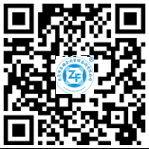Contact Us
Contact: Miss Luo
Phone:13798904733
18928298220
Tel:0769-22805501
QQ:691743147
Eamil:dgzf@dgzf0769.com
Address:Room 104, Building 6, Haiyi Palace Shangdu, No. 66 Hujing Avenue, Houjie Town, Dongguan City, Guangdong Province
ISO/TS 16949:2009 certification requires that the applicant for certification has at least 12 months of quality management system operation history, monitoring information about whether customers believe that the organization has met customer requirements, and continuously evaluating the performance of the realization process and the performance of the manufacturing process to verify Product quality and process efficiency. ISO/TS 16949:2009 requires the establishment of the operating time of the quality management system. Each certification body requires 3 months or 6 months, but most require 6 months. When applying for certification, enterprises must prepare the following documents:
1. Quality manual----(Submitted before certification)
2. Procedure document Procedure----(Submitted before certification)
3. Internal audit plan
4. Internal audit report
5. Management review plan
6. A copy of the internal auditor training certificate Certificates of internal auditors
7. List of automotive products and customers
8. Specific requirements of customers
9. List of customers' technical specifications
10. Table of process analysis (process flow chart)
11. Analytical graph of process approach (tortoise graph or nine-column table)
12. Production records for more than 12 months (12-month performance indicator statistics)
13. If the company has automotive products and non-automotive products, the company needs to have an independent production line or workshop for automotive products
14. Contract and application form----(Submitted before certification)
15. Company business license and organization code certificate----(Submitted before certification)
Certification audit focus:
1) ISO/TS 16949:2009 focuses on the integrity of the quality management system. The main body applying for certification is the manufacturing site of auto parts (or related products), and supporting functions (such as design center, sales service, procurement, warehouse, etc.) must be included in the manufacturing site whether it is with or away from the manufacturing site. Scope of the audit. Note: Support functions cannot independently obtain ISO/TS 16949:2009 certification.
2) The deletion of ISO/TS 16949:2009 requirements for the quality management system is only allowed to appear in the product design part (Technical Specification 7.3), when the responsibility for product design is borne by the customer. The rationality of product design deletion must be verified by the auditors on-site audit, and the audit requirements are stricter than the current 9000 grasp of the terms. If the company outsources product design, the auditor must verify that both the company and the design subcontractor have the appropriate capabilities to meet the requirements of the relevant clause (7.3) of the technical specification, including the interface between the company and the contractor.
3) The certification audit focuses on customer satisfaction and whether all customer-related requirements are effectively implemented. ISO/TS16949 proposes the concept of customer-oriented process. The so-called customer-oriented processes are those processes that have direct contact with customers, that is, those activities that customers have direct requirements or expectations for the enterprise. The IATF requires that the auditor must identify the customer-oriented process (COP) of the enterprise before the audit, and analyze the related support process, management process, measurement indicators, related requirements, etc. based on the customer-oriented process. The IATF lists 10 typical customer-oriented processes, which are: 1) market analysis; 2) bidding; 3) order/requirement; 4) product and process design; 5) product and process validation; 6) product production; 7) Delivery; 8) Payment; 9) Warranty/Service; 10) After-sale process/customer feedback.
4) ISO/TS 16949:2009 emphasizes that the certification audit process is a value-added process. The IATF requires the audit process not only to evaluate whether the company's quality management system meets the requirements of the ISO/TS 16949:2009 technical specification, but also to identify opportunities for improvement for the company. These improvement opportunities will benefit companies to improve product quality, optimize processes, reduce costs and increase efficiency. Therefore, the review process is more rigorous and meticulous.
5) ISO/TS 16949:2009 focuses on the effective application of five major tools. For example, the application of APQP is not about the number of records established, but more about its effectiveness, such as the integrity of design input, output, review, verification, and confirmation; whether failure modes and control plans are dynamically documented and obtained during the manufacturing process. Correct and complete application; relevance, accuracy, suitability, etc. of SPC, MSA data.

 简体中文
简体中文
